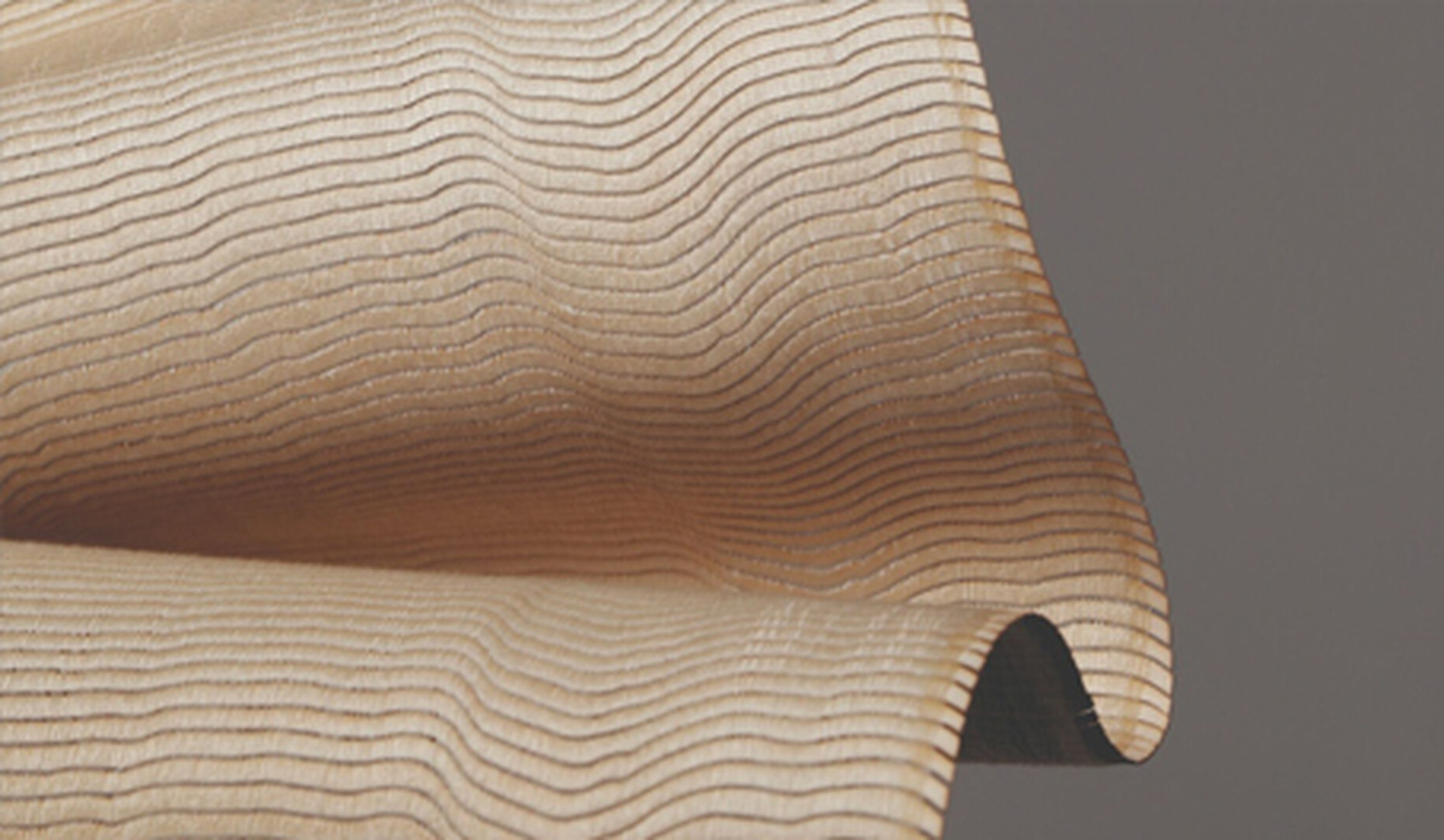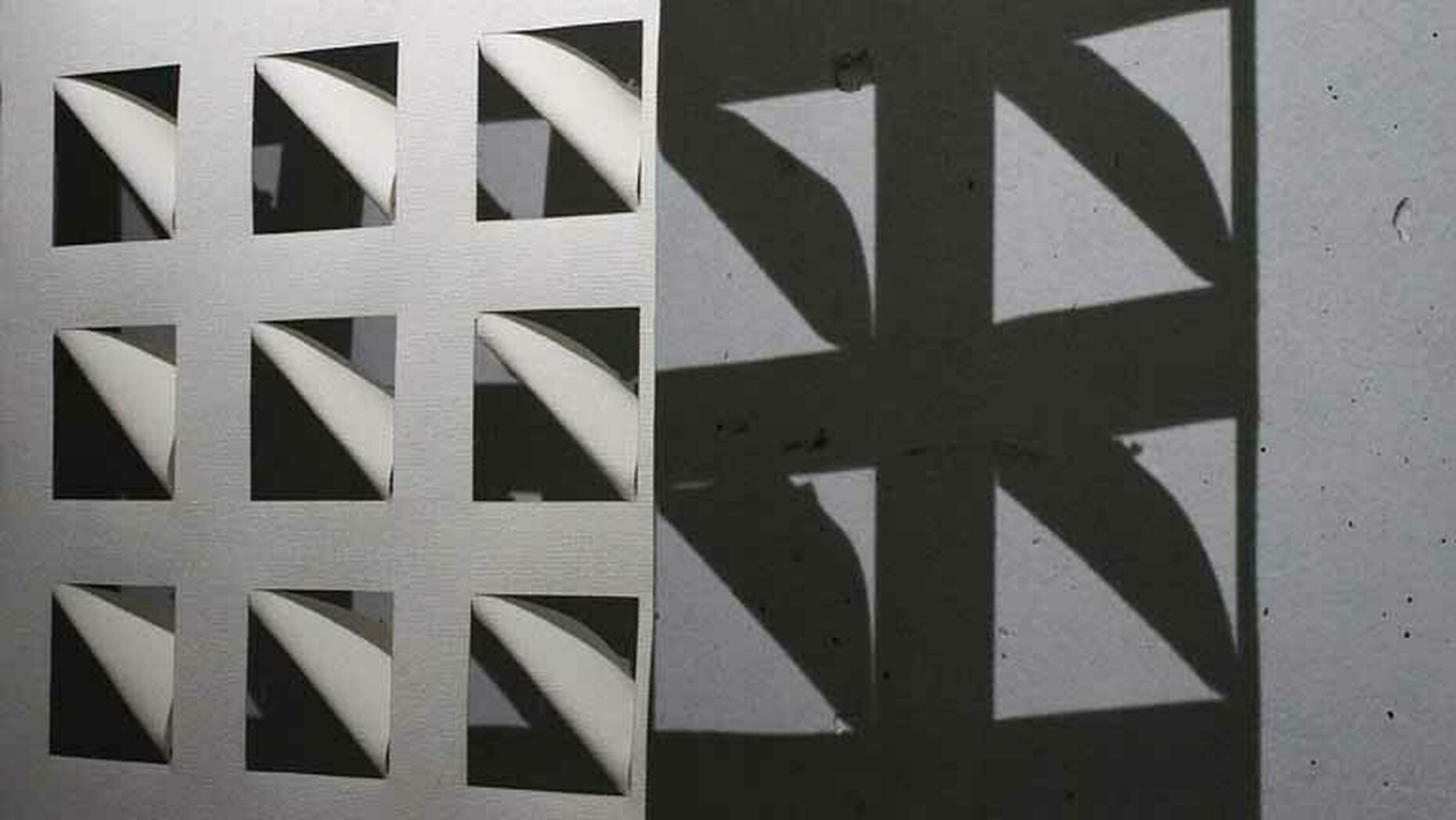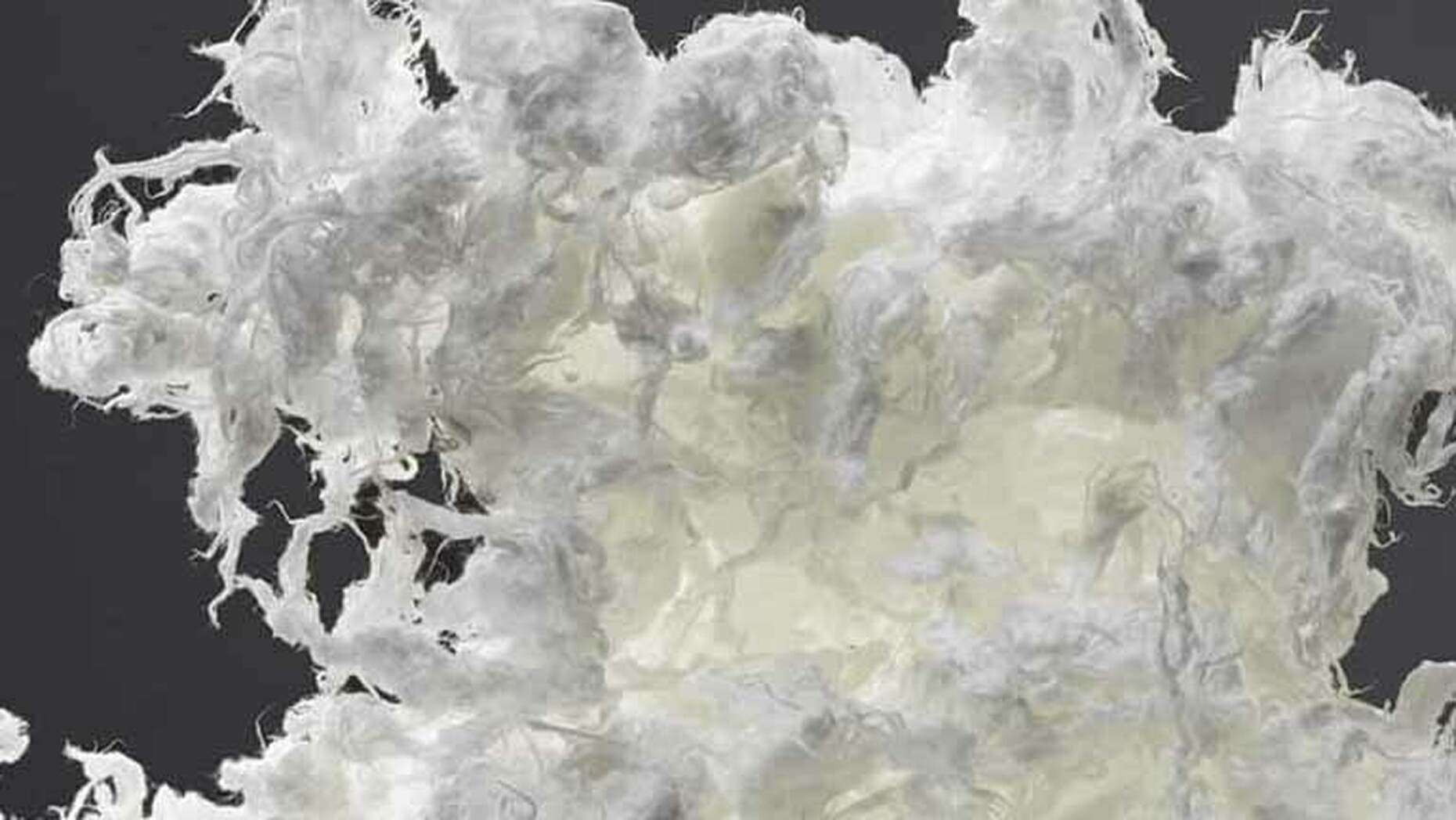REVIEW – HEIMTEXTIL 2023
10 Highlights of the Heimtextil 2023
Isabella Valerie Braunreuther
Project: A softer wood
University: State Academy of Fine Arts Stuttgart, Germany
Winner of the New & Next University Competition at Heimtextil
Textile designer Isabella Valerie Braunreuther works with weaving, knitting and experimental techniques to explore the diversity and horizons of textiles - especially with regard to natural and recycled materials. In her project 'A softer wood', which she developed as a diploma/master's thesis at the Staatliche Akademie der Bildenden Künste Stuttgart, she shows a way of merging wood with textiles by examining the core properties and bringing them into a stable as well as flexible symbiosis. The result is a fabric that can be used as a curtain or room divider, for example.

Gaia Leonardi
Project: Manifattura – Minimal
University: Lucerne University of Applied Sciences and Arts (Design and Art), Switzerland
Winner of the New & Next University Competition
In collaboration with the Ticino-based company Rogica, Gaia Leonardi was able to obtain textile waste from their anti-glare production. Applied to products for interior design, she explores the multiple possibilities of repurposing the qualities of textiles, highlighting the sustainability, value and essence of the "less is more" concept for economical, artisanal production.

Thomas Vailley
Project: Farm Universe
Thomas Vailley uses the potential of a dairy farm's circulatory system to develop circular biocomposites from raw materials such as cellulose, starch, lignin as well as casein and whey, for example. The first result of this research project is extruded profiles made from straw fibres and wheat starch. The fibres are obtained by steam explosion - carbon negative and without the use of chemicals. Similarly, vegan leather can be produced from agricultural waste, which is used to manufacture home elements such as chair covers and lampshades.

Simone Post
Project: Wildflowers – A New Beginning
Simone Post creates new products from textile scraps such as those from Kvadrat, Vlisco or Adidas, such as the "Wildflowers - A New Beginning" rugs, for which she used laser cutting and folding techniques to add structural properties to the product. The fabrics are cut into strips and folded and wrapped into rugs, with a variety of colour combinations. Both the production of the textiles and the further processing take place in the Netherlands, so that the textile and product designer can guarantee short transport routes.

Studio Rens
Project: RE-vive in cooperation with Tarkett
The design duo Rens has developed RE-vive, an innovative collection of recycled carpets, in collaboration with the flooring manufacturer Tarkett. Old models from the manufacturer were hand-dyed with a red dye that gave each carpet a different colouring. Through this process, Studio Rens' collection celebrates the irregularity of products that were designed to be uniform and changes the perception of mass-produced products.

Renewcell
Project: Circulose
Circulose is a biodegradable fabric made entirely from old, discarded textiles, preferably cotton clothing because it contains a lot of cellulose. The clothing is shredded, unbuttoned, cut open, decolourised and processed into a pulp. Impurities such as plastic and polyester are removed. Renewcell's recycling technology turns material that is no longer needed and would otherwise end up in landfills or incinerators into a new, natural raw material. The sludge is dried to produce sheets of pure circulose. These sheets are baled and can be reprocessed by fibre manufacturers into new high-quality textile fibres to make new clothes, for example.

Mogu
Project: Fungar Architecture Project
Mogu is developing a structural substrate of living fungal mycelium interspersed with nanoparticles and polymers. This structural substrate is said to be able to create buildings that grow, self-construct, repair and adapt to the environment. The structures would thus not only be made of environmentally friendly building materials, but also be able to respond to changes in light, temperature and air pollutants. By using fungi as an integrated structural and computational substrate, the buildings would also have low production and operating costs, have embedded artificial intelligence and be able to be returned to nature after use.

Aliki van der Kruijs
Project: Afterseason
The research project Afterseason focuses on the reuse of chemical waste. Through collaboration with various creative disciplines such as art, architecture and fashion, applications of the techniques developed to process the paint are manifested. To support the theoretical and practical research, she has collaborated with scientists, architects, textile, colour and screen printing specialists, archives and research institutions as well as industry.

Honext
Project: Next-gen Upcycled Materials
Honext uses a carbon-neutral, circular biotechnology process to recycle waste fibres into panels for use in the construction industry. Made from the cellulose of waste paper and cardboard, the enzymes are added in place of non-recyclable resins to create strong bonds between the fibres. The non-toxic, insulating, moisture-resistant, fire-retardant and stable boards are durable and can be returned to the production cycle. The company envisions "a future without waste" and "considers goods at the end of the cycle not as waste, but as an unused resource".

Milan Friedrich
Project: Towards a New Matter
In the material-based research project, denim fibres are transformed into a lightweight and sound-absorbing sheet material through a recycling process. This biodegradable mono-material is produced without the addition of chemical binders, as it consists entirely of natural resources and locally generated waste and scraps. The manufacturing process makes it possible to transform recycled textile fibres into modular, expandable elements that can be arranged in spaces to create room-dividing structures. The resulting elements have high strength and a stone-like aesthetic without losing the warm and soft tactility of textiles.
















